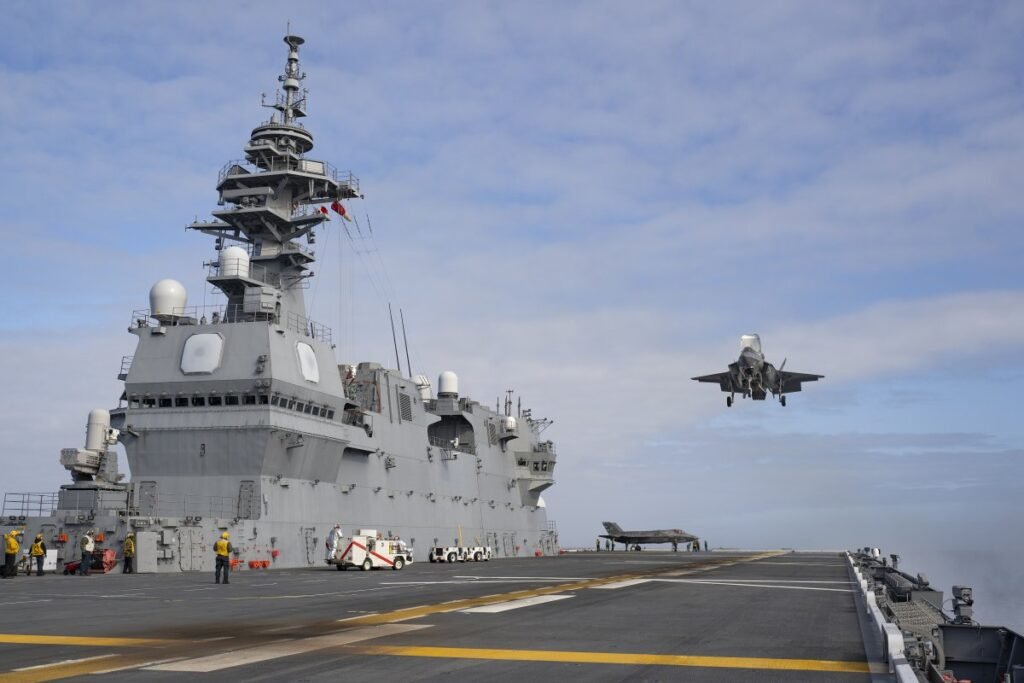China is building a new fleet of replenishment ships—capable of providing supplies to other vessels at sea—as the East Asian power’s navy expands its overseas presence.
Newsweek has reached out to the Chinese Defense Ministry for comment via email.
Why It Matters
China possesses over 370 naval vessels, making it the world’s largest navy by hull count and surpassing its rival, the United States. Over the past year, Chinese warships have conducted missions farther from home—including in Europe and Africa, as well as around Australia in the South Pacific—challenging America’s naval dominance.
According to a Pentagon report, China has a “sizable force of highly capable logistical replenishment ships,” which support long-distance, long-duration deployments—such as recently concluded dual aircraft carrier operations in the broader western Pacific.
What To Know
Since early June, photos circulated on social media indicate that China has launched and tested several newly built Type 903A replenishment ships. A number of vessels from this class—as well as their predecessor, the Type 903—are already in service.
Meanwhile one other newly produced Type 903A may have been undergoing sea trials already. The AOR-design is again in active production both at Wuhu Shipyard and COMEC (formerly GSI), Guangzhou. Same source. pic.twitter.com/LBdyGaVWM4
— Alex Luck (@AlexLuck9) June 5, 2025
Both the Type 903 and Type 903A vessels can carry fuel oil, fresh water, cargo, and ammunition, according to open-source information. Australia-based naval analyst Alex Luck estimates that China has likely constructed an additional four Type 903A ships.
The new ships were constructed at shipyards in Guangzhou and Wuhu, the analyst wrote in a January article for the specialist outlet Naval News. It remains to be seen whether the new ships are Type 903A vessels or further improved versions of this class.
The Type 903/A fleet forms the backbone of China’s replenishment capability, Luck told Newsweek, adding that China’s doubling of this type of ship is not unreasonable, given both the growing demand and the need to build resilience for conflict scenarios.
Despite drawing less attention than the larger Type 901 replenishment ships, the Type 903 ships are considered “far more crucial” to China’s navy for operating across island chains in the western Pacific, as well as more expeditionary missions, the analyst explained.
China’s acquisition of multiple new replenishment ships indicates its seriousness in pursuing the goal of having a world class military by mid-century, Tom Shugart, an adjunct senior fellow at the Center for a New American Security, told Newsweek.

The Chinese Type 903A replenishment ship CNS Kekexilihu is seen in Qingdao, China, on April 20, 2024.
Anna Ratkoglo/Sputnik via AP
What People Are Saying
Tom Shugart, an adjunct senior fellow at the Center for a New American Security, told Newsweek: “Platforms like [replenishment ships] are essential for furthering the [People’s Liberation Army] Navy’s reach as it operates further and further from home on a regular basis.”
Australia-based naval analyst Alex Luck told Newsweek: “I’ve long held the view that the current Type 903/A-fleet is rather insufficient considering the very high rotational tempo the type experiences across [People’s Liberation Army Navy] operations.”
What Happens Next
China continues its naval buildup by launching more warships while operating 307 shipyards, at least 35 of which are linked to military or national security projects.






![[News] NXP Reportedly Eyes Local Foundry Partner to Boost Full Chipmaking in China](https://koala-by.com/wp-content/uploads/2025/07/NXP-Hamburg-Germany-624x416.jpg)